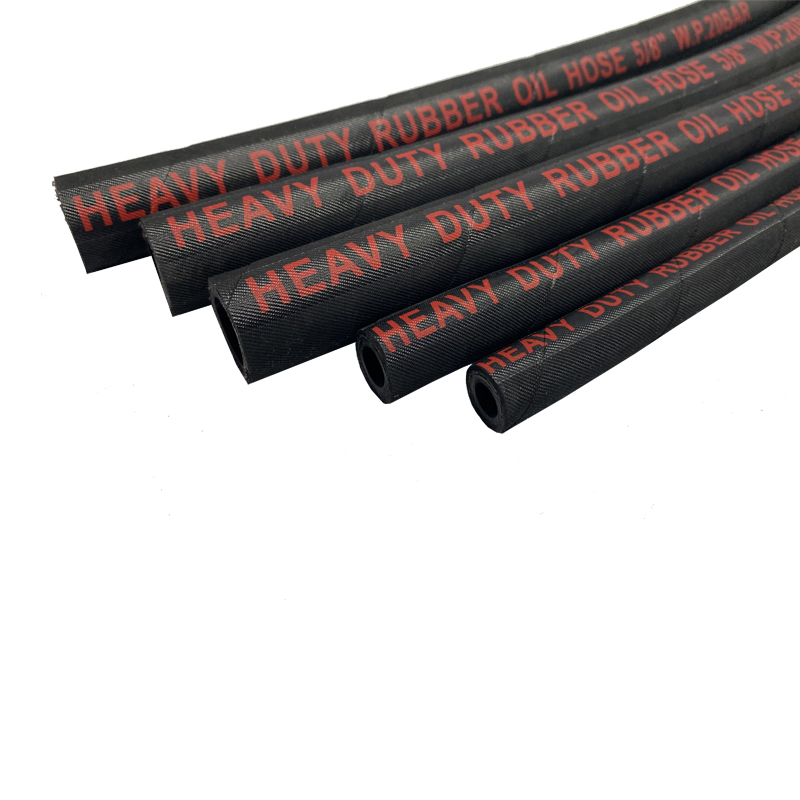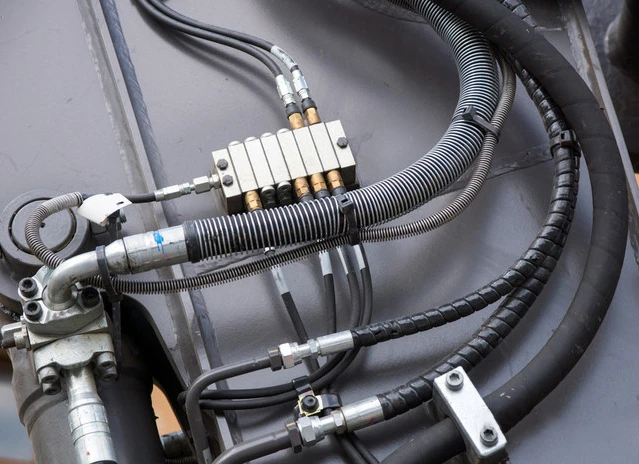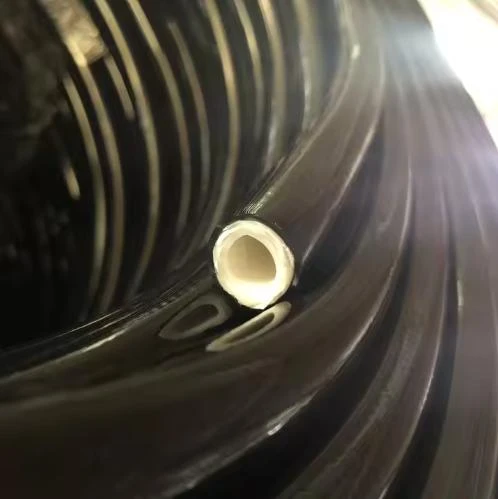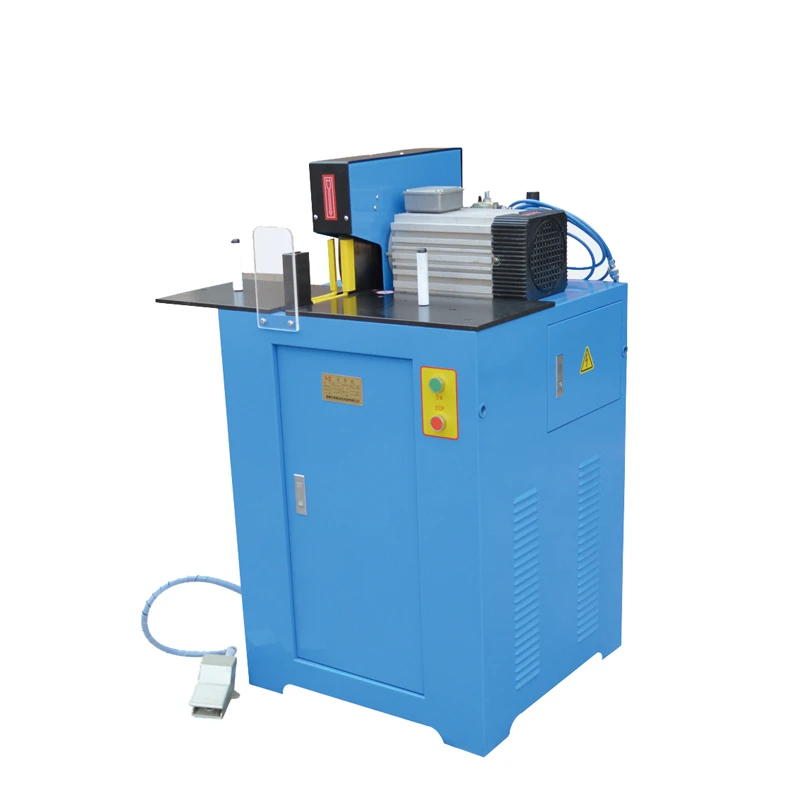Selang lenga
Selang lenga minangka tabung fleksibel khusus sing dirancang kanggo nransfer macem-macem jinis lenga, kalebu pelumas, cairan hidrolik, lan lenga bahan bakar, ing sistem industri, otomotif, lan pertanian.
Dibangun nganggo tabung njero sing tahan lenga, bala sing kuat, lan tutup njaba sing tahan lama, selang minyak dirancang kanggo nangani tekanan dhuwur lan kahanan sing atos nalika njaga keluwesan lan umur dawa. Selang iki akeh digunakake ing aplikasi kaya sistem hidrolik, pelumasan mesin, pangiriman bahan bakar, lan transfer lenga ing mesin lan peralatan. Contone, ing sistem hidraulik, selang minyak njamin aliran cairan hidraulik ing antarane komponen, nggampangake operasi sing lancar. Ing mesin otomotif, padha nggawa lenga motor kanggo lubrication lan cooling. Aplikasi industri kalebu nransfer volume minyak sing akeh saka tangki panyimpenan menyang peralatan utawa saluran pipa. Selang lenga uga penting ing tetanèn kanggo nguwasani traktor lan mesin sing gumantung lenga liyane. Konstruksi lan kompatibilitas sing bisa dipercaya karo macem-macem jinis lenga nggawe penting banget kanggo njaga operasi sing efisien lan aman ing pirang-pirang industri.
Apa Bahan Utama sing Digunakake ing Selang Minyak, Lan Kepiye Ngaruhi Kinerja?
Selang minyak, sing penting kanggo macem-macem operasi sing gegandhengan karo lenga, biasane digawe karo bahan kaya karet nitril (NBR), karet sintetik, termoplastik, lan PVC, sing dipilih kanggo sifat spesifik kanggo nangani transfer minyak kanthi efektif ing macem-macem jinis selang minyak. Contone, selang adhem lenga asring mbutuhake bahan sing bisa ngatasi boros panas nalika mindhah lenga. Karet nitril, sing dikenal kanggo nggawe selang tahan lenga sing apik banget, digunakake kanthi akeh amarga tahan banget kanggo lenga, bahan bakar, lan pelumas, saengga cocog kanggo aplikasi otomotif lan industri.
Karet sintetis nawakake fleksibilitas lan daya tahan sing luwih apik, utamane ing lingkungan tekanan dhuwur, nalika uga tahan tuwa lan retak. Iki nggawe pilihan sing apik kanggo selang tekanan minyak sing kudu njaga integritas ing tekanan. Bahan termoplastik nyedhiyakake konstruksi sing entheng lan tahan kanggo abrasi lan faktor lingkungan, saengga cocog kanggo aplikasi portabel utawa ruangan.
PVC umume digunakake kanggo selang lenga tujuan umum amarga regane terjangkau lan fleksibilitas nanging bisa uga ora bisa ditindakake ing suhu utawa tekanan sing ekstrem. Ing kasus ngendi selang lenga kudu digunakake ing lingkungan kurang nuntut, PVC bisa dadi pilihan biaya-efektif. Tulangan kayata kepang tekstil, kawat baja, utawa lapisan spiral nambah kekuwatan selang minyak lan toleransi tekanan, sing penting kanggo selang tekanan minyak utamane. Pilihan materi nyebabake keluwesan selang, kisaran suhu, lan kompatibilitas karo macem-macem jinis lenga, njamin kinerja optimal lan umur dawa ing aplikasi tartamtu kanggo kabeh. selang industri.
Kepiye Sampeyan Njaga Selang Minyak kanggo Mesthekake Keandalan lan Keamanan Jangka Panjang?
Njaga selang lenga kalebu inspeksi reguler, penanganan sing tepat, lan ketaatan pedoman operasional kanggo nyegah kegagalan lan ngluwihi umur layanan. Priksa selang kanthi periodik kanggo tandha-tandha nyandhang, kayata retak, bocor, blisters, utawa abrasions, utamane ing sakubenge fitting lan tikungan, amarga wilayah kasebut rawan stres. Ganti selang sing rusak langsung kanggo ngindhari kegagalan sistem utawa bebaya safety. Ngresiki selang kanthi reguler kanggo mbusak residu lenga, rereget, lan rereged sing bisa ngrusak materi saka wektu. Panyimpenan sing tepat penting; simpen selang ing papan sing adhem, garing, lan duwe ventilasi sing apik, adoh saka sinar srengenge langsung, kelembapan, lan bahan kimia keras sing bisa ngrusak materi. Aja ngluwihi wates tekanan, suhu, lan radius tikungan sing ditemtokake selang nalika digunakake kanggo nyegah kakehan lan nyandhang durung wayahe. Priksa manawa fitting dipasang kanthi aman lan priksa manawa ana bocor utawa sambungan sing kenthel. Kanthi ngetutake praktik pangopènan iki, sampeyan bisa njamin kinerja sing dipercaya, nambah safety, lan ndawakake umur selang minyak.
Analysis of Core Materials and Oil-Resistant Mechanisms in Oil Hoses
SINOPULSE designs high-performance oil hoses with a deep understanding of material science and fluid dynamics. The selection and engineering of core materials play a pivotal role in ensuring hoses can withstand continuous exposure to various oils without degradation. Here’s an in-depth look at the key components and their oil-resistant mechanisms that make SINOPULSE hoses the preferred choice for oil suction, transfer, and delivery applications.
Nitrile Butadiene Rubber (NBR): The Backbone of Oil Resistance
At the heart of SINOPULSE oil-resistant hoses lies Nitrile Butadiene Rubber (NBR), a synthetic elastomer renowned for its exceptional oil compatibility. NBR’s molecular structure, characterized by acrylonitrile monomers, creates a cross-linked network that repels hydrocarbon-based oils. This unique composition minimizes oil absorption, ensuring the hose maintains its physical properties—such as flexibility, strength, and sealing integrity—even after prolonged immersion. For example, in diesel fuel or hydraulic oil applications, NBR-lined hoses exhibit a swelling rate of ≤5%, far surpassing the performance of standard rubber materials.
Reinforcement Layers: Enhancing Structural Integrity
To complement the oil-resistant inner tube, SINOPULSE integrates robust reinforcement layers. High-tensile steel wire braids or synthetic fiber meshes are woven around the NBR core, providing mechanical strength and pressure resistance. These layers distribute internal pressure evenly, enabling oil transfer hoses to handle working pressures up to 40 bar (580 PSI) and burst pressures exceeding 120 bar (1740 PSI). In heavy-duty scenarios like oil tank truck loading or industrial hydraulic systems, the reinforcement prevents tube collapse and leakage, ensuring safe and efficient oil delivery.
Outer Cover: Protection Against External Threats
The outer cover of SINOPULSE oil hoses is engineered to withstand harsh environments while safeguarding the inner components. Made from abrasion-resistant synthetic rubber or thermoplastic compounds, it resists cuts, punctures, and UV degradation—common hazards in outdoor oil transfer operations. Additionally, anti-static outer layers are available for applications involving flammable oils, dissipating electrical charges to prevent ignition risks.
Advanced Formulations for Specialized Oils
For applications requiring compatibility with synthetic lubricants, biofuels, or high-viscosity oils, SINOPULSE offers oil hoses with advanced material formulations. Fluoroelastomer (FKM) liners, for instance, provide superior resistance to aggressive chemicals and high temperatures, making them ideal for aerospace or automotive manufacturing. These specialized hoses undergo rigorous testing to ensure compliance with industry standards, such as ISO 18752 for fuel hose performance.
In industries where reliable oil transfer is non-negotiable, SINOPULSE’s commitment to material innovation and engineering excellence ensures that our oil hoses deliver long-lasting performance, safety, and efficiency.
Fault Warning and Emergency Handling of Oil Hoses
As a trusted oil hose manufacturer, SINOPULSE prioritizes safety and reliability in every oil hose we produce. However, even the most durable oil resistant hoses may encounter issues over time. Understanding how to detect early signs of failure and execute proper emergency protocols is crucial for preventing costly downtime and potential hazards in oil suction, transfer, and delivery operations.
Early Warning Signs of Hose Failure
SINOPULSE recommends regular visual inspections to identify impending issues. Bulges or Swelling indicate internal pressure damage or material degradation, often caused by excessive stress or incompatible oil types. Cracks or cuts in the outer cover expose the inner layers to environmental threats, increasing the risk of leakage. Discoloration or Hardening of the hose material signals chemical breakdown, particularly if the hose has been exposed to incompatible fluids. Additionally, unusual vibrations or whistling noises during operation may suggest blockages or pressure imbalances within the oil hose.
Emergency Response Protocols
In the event of a suspected hose failure, immediate action is essential. First, isolate the system: shut off the oil supply valves and depressurize the line to prevent further leakage. If the hose is used for flammable oils, evacuate the area and prohibit any ignition sources. For minor leaks, applying a specialized hose repair tape designed for oil-resistant materials can provide temporary containment, but this is only a stopgap measure. For significant damage, replace the hose with a SINOPULSE oil transfer hose of the same specification, ensuring proper fitting and alignment to avoid future issues.
Preventive Maintenance for Longevity
To minimize the risk of emergencies, follow SINOPULSE’s maintenance guidelines. Avoid exceeding the hose’s rated working pressure and temperature range, as overloading accelerates wear. When installing oil suction hoses, ensure the bend radius meets specifications to prevent kinking. Regularly clean and lubricate connectors to maintain a tight seal, and store hoses in a cool, dry environment away from direct sunlight to slow down material aging.
With SINOPULSE’s comprehensive approach to oil hose safety, operators can confidently manage potential risks and ensure continuous, secure oil transfer in any industrial setting.












